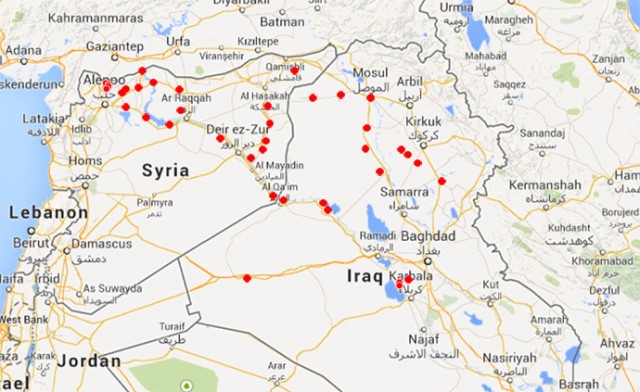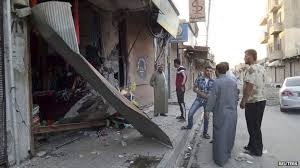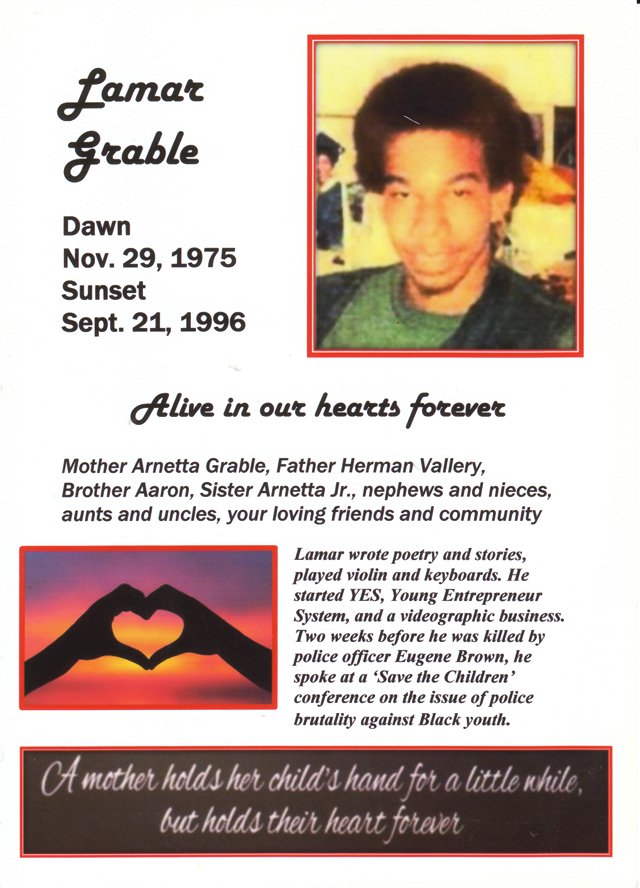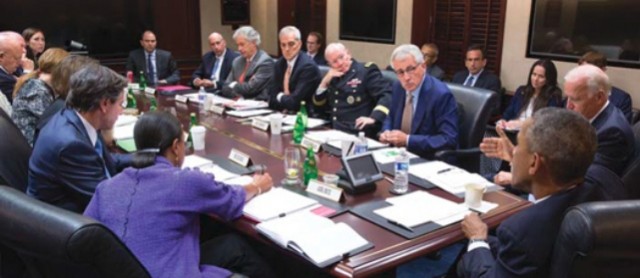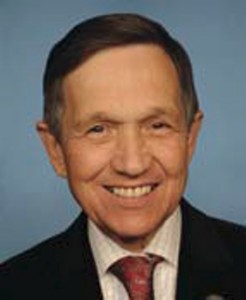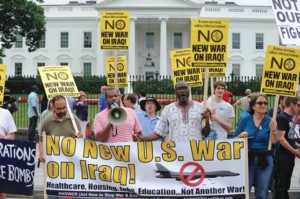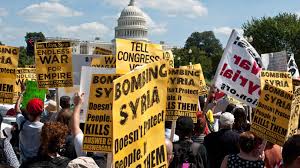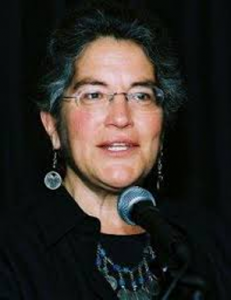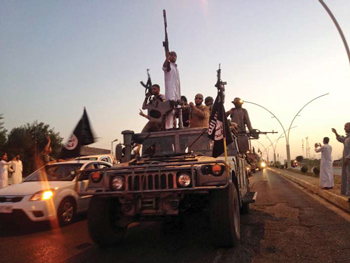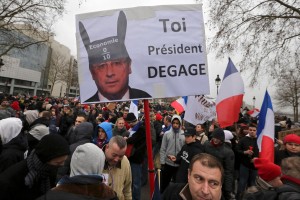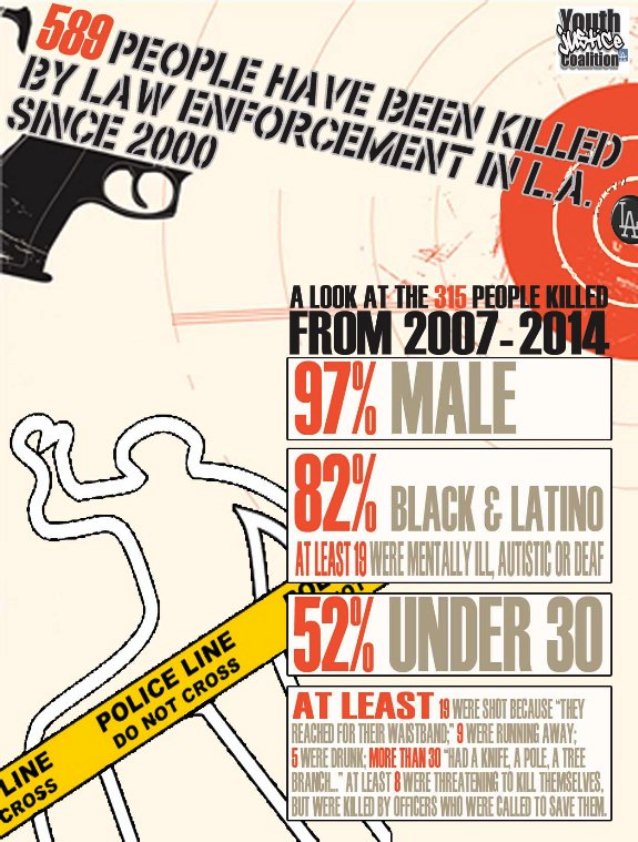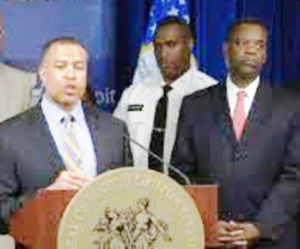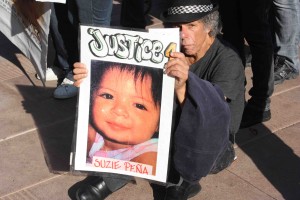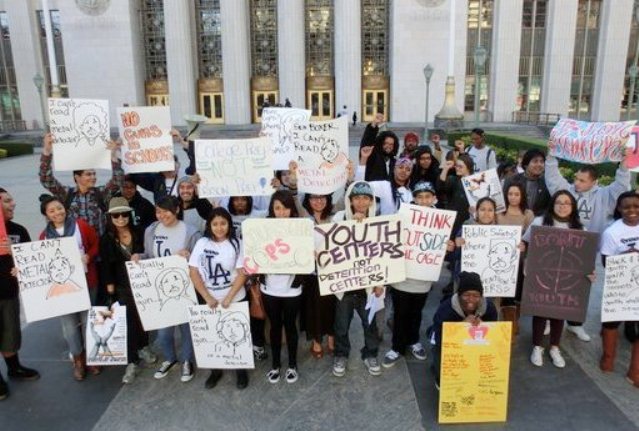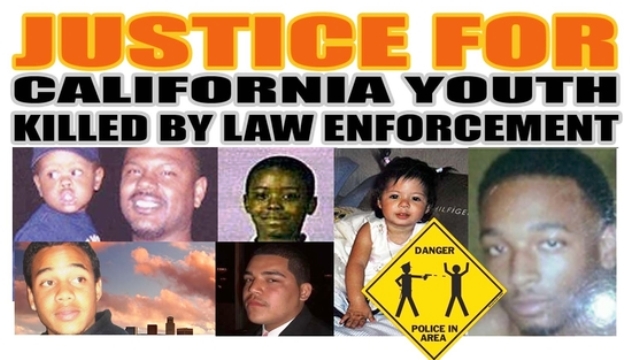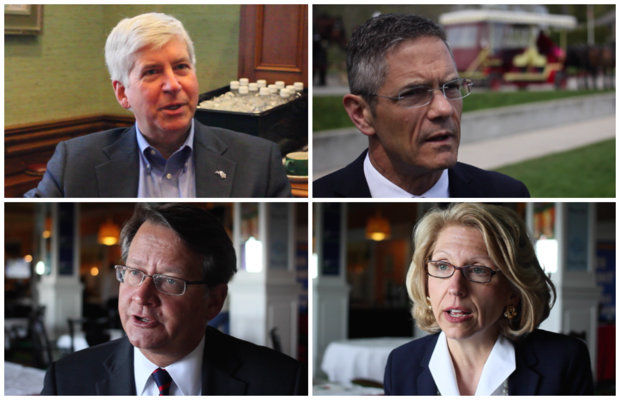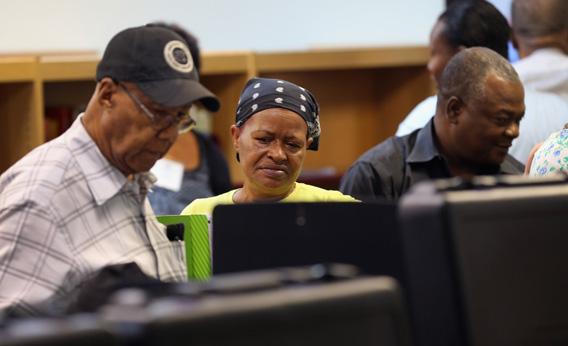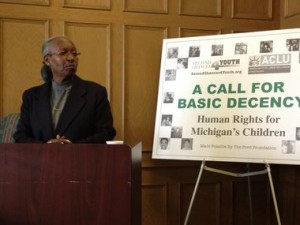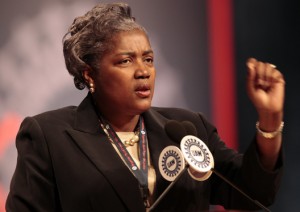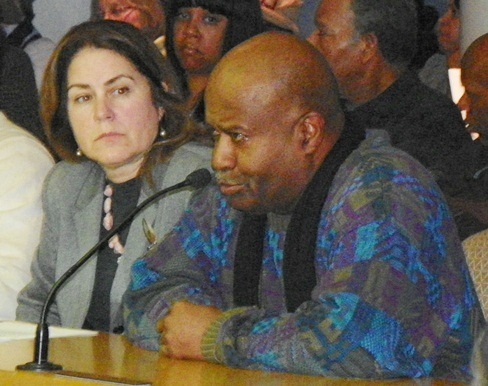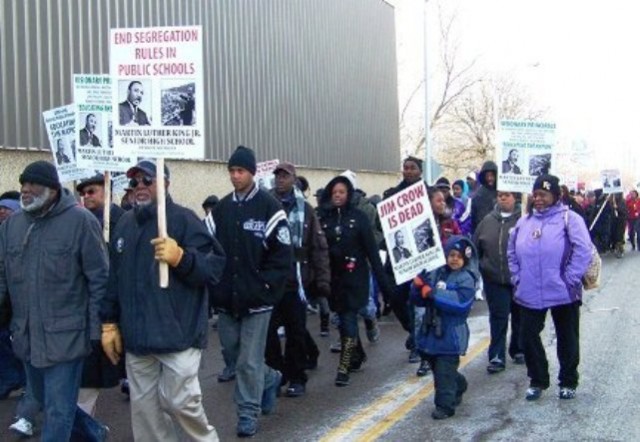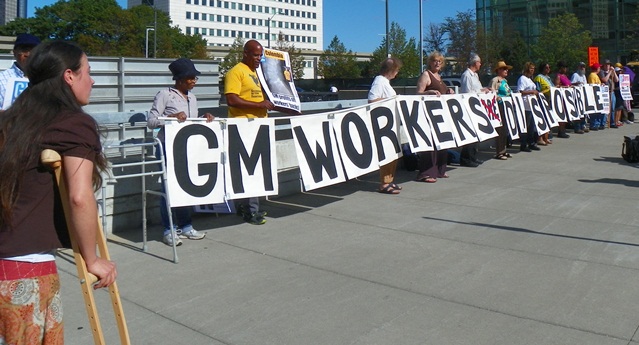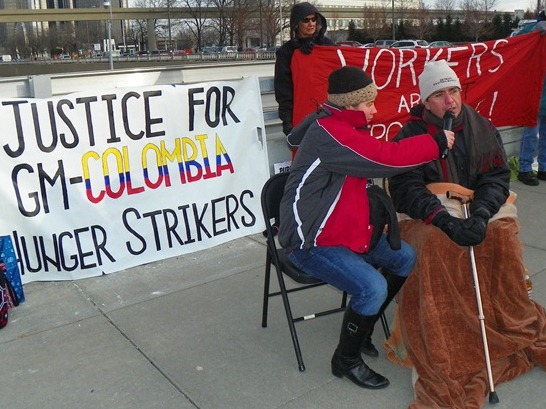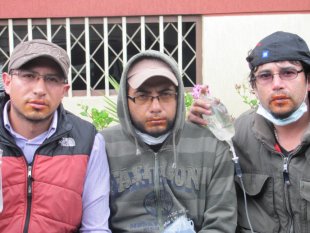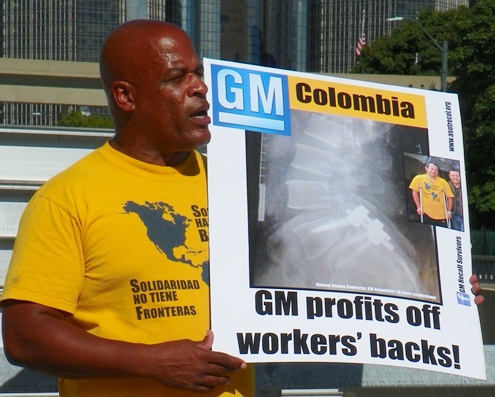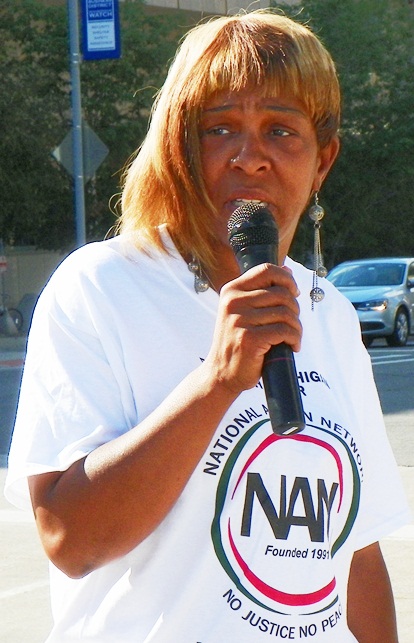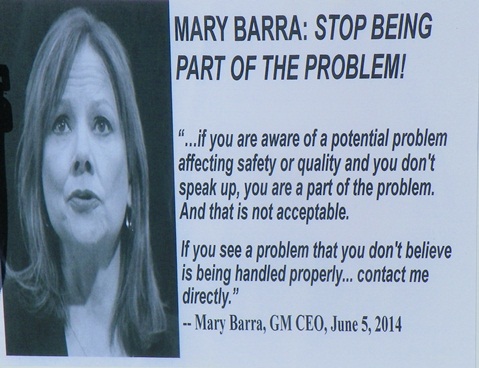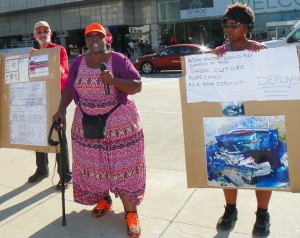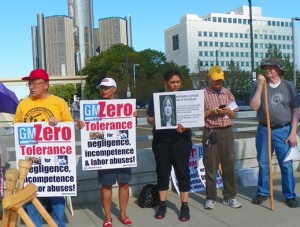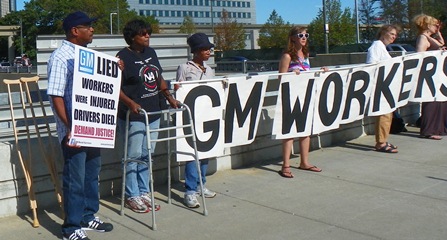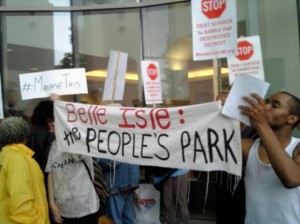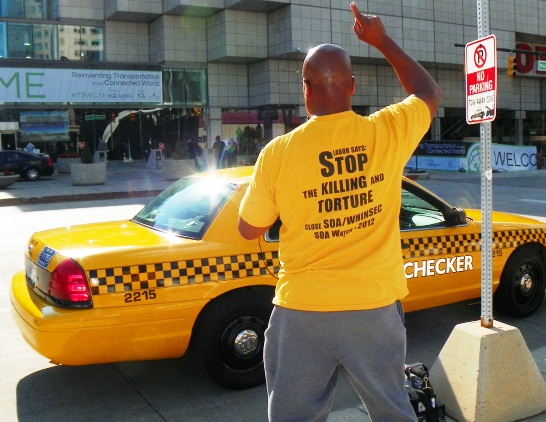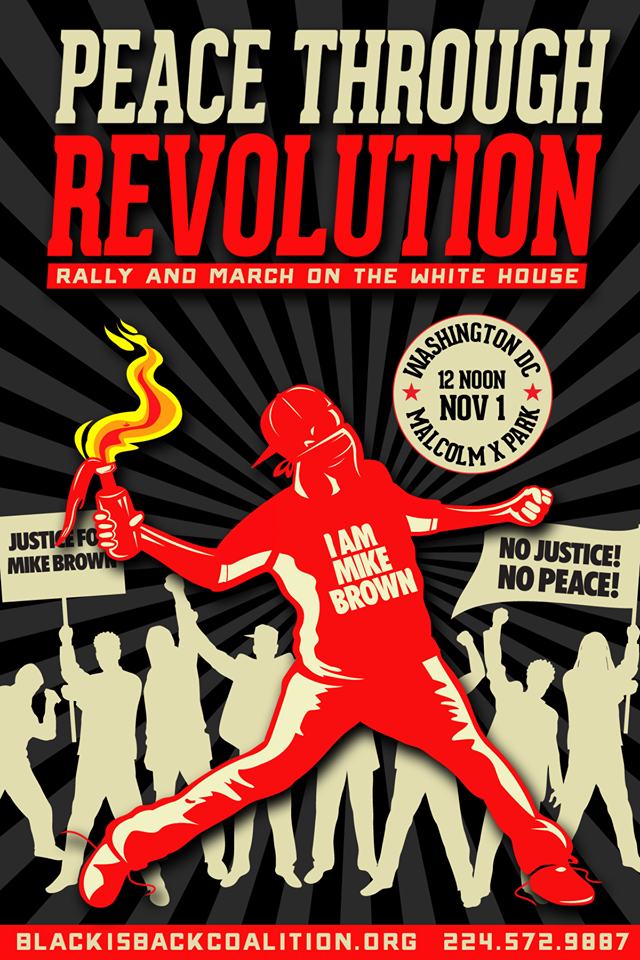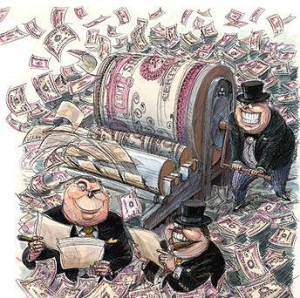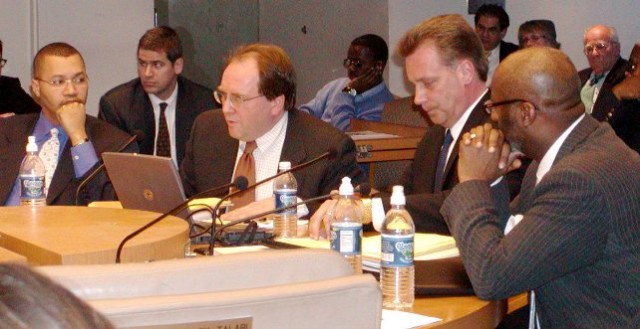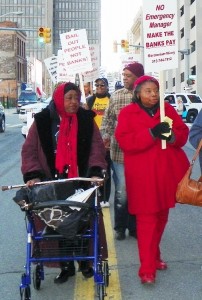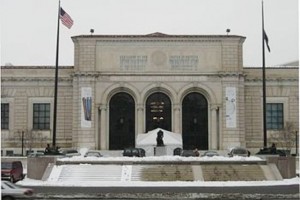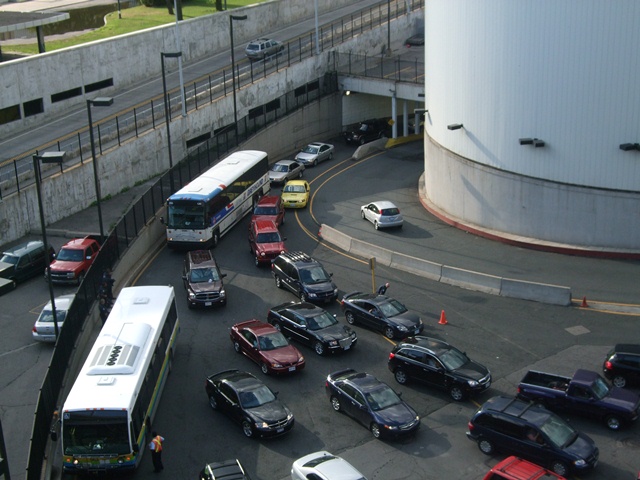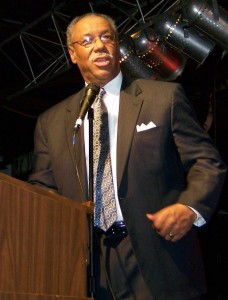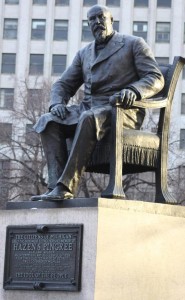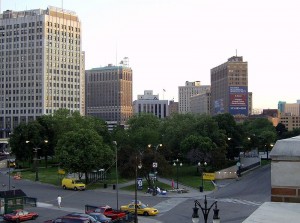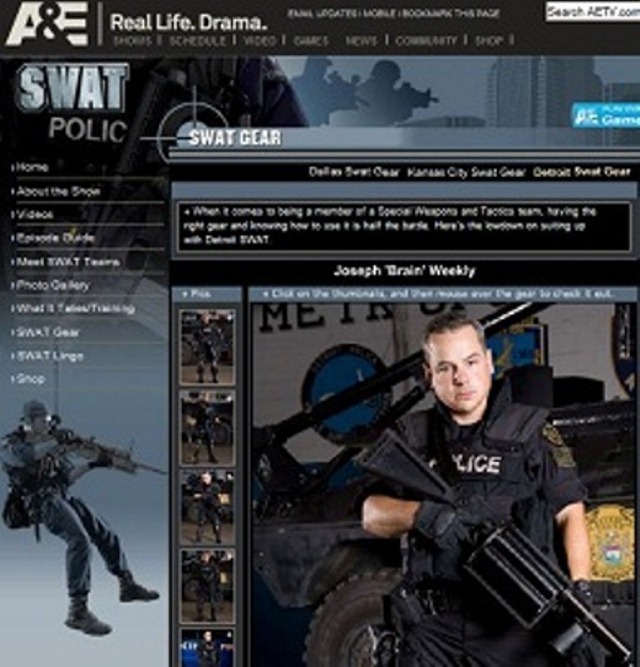
Joseph Weekley shown as star on previous series, Detroit SWAT. He is actually dimunitive in height, appearing to be under five feet tall.
Did Weekley deliberately kill child as grandmother testified earlier?
Weekley defense calls grandmother “liar” because lack of stippling indicated Weekley did not shoot at close range
Medical examiner says direct contact gunshot wounds result in no stippling
Post conviction hearing on Aiyana’s father Charles Jones Sept. 19
By Diane Bukowski
September 18, 2014
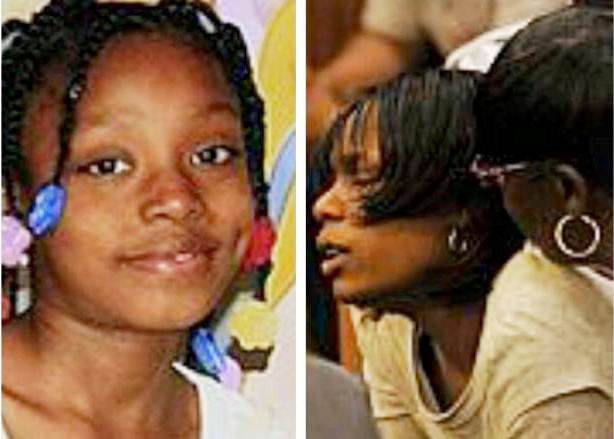
- Aiyana Stanley-Jones and mother Dominika Stanley-Jones. Her mother is shown collapsing after a mistrial was declared in Joseph Weekley’s first trial.
DETROIT—Opening statements in the re-trial of Detroit police officer Joseph Weekley for killing Aiyana Stanley-Jones, 7 in May, 2010 were eclipsed by a revelation from Wayne County Medical Examiner Dr. Carl Schmidt regarding the gunshot wound to the top of the little girl’s head.
Weekley fired his MP5 submachine gun a few seconds after entering the home, during a military-style raid, according to both the prosecution and defense. Aiyana died at St. John’s hospital after police took her to the hospital. They prevented her mother, father, and grandmother from seeing or holding the child in her dying moments.
“This was not the typical appearance of an entrance wound,” Schmidt testified on direct exam by Wayne County Assistance Prosecutor Robert Moran. “It was irregularly shaped. When the bullet strikes an intermediate target, it can deform the bullet . . . True stippling is when a gun is fired close enough to the surface and gunshot residue is deposited on the skin.”
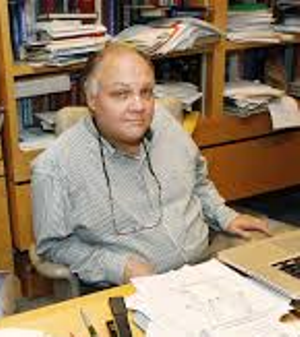
- Wayne Co Medical Examiner Dr. Carl Schmidt
He said “pseudo-stippling” results from a gun being fired through a hard object, but firing through a soft object such as a blanket or other fabric leaves no stippling.
“There was no evidence of close-range firing,” he told Weekley’s defense attorney Steve Fishman on cross-exam.
“Mertilla Jones [Aiyana’s paternal grandmother, who was sleeping with her on a front room couch], lied in court statements, depositions and newspaper stories,” Fishman had said in his opening statement. “She’s going to testify that Joseph Weekley came in the house, walked up to Aiyana Jones, put his gun to her head and assassinated her. That’s a complete and total lie.”
He based his statement for the most part on the absence of stippling.
But this time, Schmidt countered, “If the muzzle of a gun was in contact with the skin, there wouldn’t be stippling.”
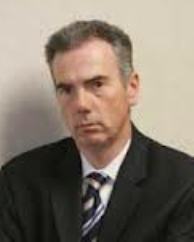
- Asst. PA Robert Moran
Moran, whose office charged Weekley only with “involuntary manslaughter” involving gross negligence, said in his opening statement that Weekley was not charged with deliberately killing Aiyana, as if the idea of a police officer deliberately killing someone, especially a child, was absurd.
Weekley previously was sued for an incident where he deliberately shot two pet dogs in front of young children during an earlier SRT raid. After Schmidt’s final statement, Moran rushed the M.E. off the stand
A 2012 report from Lindsey Harle, M.D. in Pathology Outlines on the effects of gunshot wounds says,
“Contact: muzzle is pressed against the skin when fired: ● On head, where the scalp is tightly covering the skull, entry wounds can have several different appearances: ● Round wound with blackened, seared skin margins ● Stellate shaped wound, due to tearing of skin from expanding gas dissecting between the scalp and skull ● Round wound with muzzle imprint, also due to gas expanding under the skin causing it to press back against the gun.”
Dr. Harle goes on to say that stippling only occurs with intermediate range gunshot wounds, not contact or near-contact wounds.During a break, VOD asked Moran why he cut off Schmidt’s testimony about the lack of stippling in a contact gunshot wound, but he refused to discuss the issue.
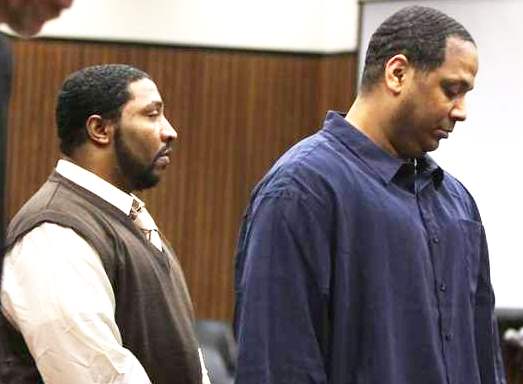
- Aiyana’s father Charles Jones and Chauncey Owens during their trials.
In what some have termed a blatant conflict of interest, Moran also prosecuted Aiyana’s common-law uncle Chauncey Owens and her father Charles Jones for killing Je’Rean Blake, 17, on May 14, 2010. That event led to the raid on the Jones home, as police hurriedly tried to solve the crime “within 48 hours.”
A camera crew from the A&E TV show “The First 48,” was embedded with police, filming their every move prior to and during the raid. Their videotape has been used as evidence by the prosecution, but a second videotape, allegedly taken by police, has somehow disappeared from the field, with no objection from Moran.
The second witness, Aiyana’s young mother Dominika Stanley, broke down weeping on the stand at several points. She testified that she and her four young children were staying for a couple of weeks at Mertilla Jones’ home so they could be with their father.
She said Aiyana’s cousins Markwell Robinson and Vincent Ellis, and great-aunt JoAnn Robinson (who has since passed) were also staying in the home.
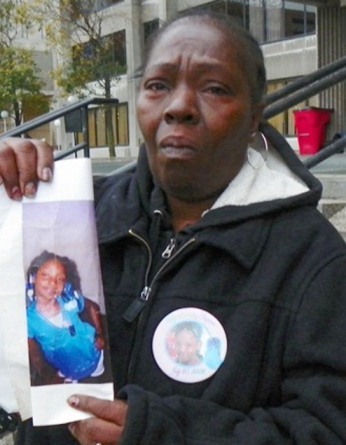
- Mertilla Jones, grandmother of Aiyana, weeps as she shows the child’s photo before hearing on the cop who killed her October 29, 2012.
“I was in the back bedroom with all four of my kids and Charles,” Stanley testified. “Aiyana walked out of the room and went to sleep with her grandmother, which was not unusual.” She said Charles went to check on his daughter afterwards, and then returned to their bedroom without event.
She testified she suddenly heard Mertilla screaming and weeping, “They killed Aiyana.”
“I just knew I couldn’t be hearing that,” Stanley, who is slightly built and fragile-looking, said. At that point, she curled up, put her head in her hands on her lap and began weeping for some time.
“Charles went out, and then I heard him just screaming,” she finally continued. “I went to the front room, and I saw police guns and flashlights. Charles was on the floor, Mertilla was on the floor, and I just dropped to the floor by the couch. Charles and Mertilla were hugging each other on their knees and still screaming. Markwell and JoAnn Robinson were on the other couch.”
She continued, “The police were wearing all black. A police officer approached me and I jumped to my knees crying. I didn’t know where my daughter was. I asked where she was, and asked to go to her, and they told me ‘not right now.’ I was there four hours, and when I got ready to leave, they told me she was in surgery. Two police officers took me and Charles to the hospital. They sat me and Charles in this room, and police, doctors and nurses came in. The first one said my baby was alive, but at some point they told my my daughter had died.”
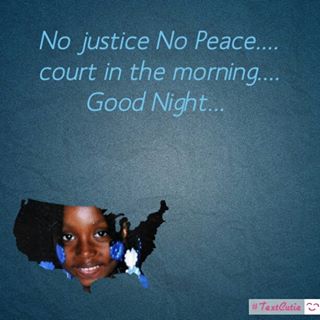
- From Dominika Stanley-Jones Facebook page. There has been more outrage expressed at the child’s killing across the U.S. and the world than is evident in Detroit, largely due to local media criminalization of her family. But her case is becoming widely known again in the wake of the murder of Michael Brown in Ferguson, MO and the subsequent community rebellion.
Moran showed a photo of Aiyana, clearly destined to be a beauty when she grew up, with big luminous eyes and dimples. Then he brought out the Hannah Montana blanket under which Aiyana had been sleeping for Stanley to identify, which she did.
At that point, Stanley asked for a break. She could be heard in the witness room sobbing, “I can’t do this” and “It hurts so bad” repeatedly. Weekley remained in his seat at the defense table, stone-faced and immobile, staring straight ahead.
After a half-hour, Stanley returned for cross-examination.
Fishman asked her if she was staying on Lillibridge on May 14 when Blake was killed, and whether she was on the front porch with other members of the Jones family when Owens’s brother Shrrod Hurt, known as “Chinaman” rode by.
Fishman said in Weekley’s first trial in 2012, which ended in a hung jury, that the group heard Hurt talk about the Blake shooting at a nearby liquor store. He cited testimony given in front of a grand jury by Aiyana’s aunt LaKrystal Sanders, in which Sanders referred to Dominique Simpson, the mother of Charles’ other children, not Dominika Stanley, being present.
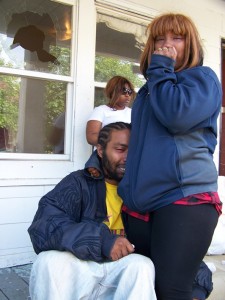
- Aiyana Jones’ father Charles Jones and Dominique Simpson grieve in front of shattered window as child’s aunt watches. Family members say both mothers helped each other looking out for all of Charles’ children. Photo by Diane Bukowski
Simpson is seen in a photo taken by VOD at right consoling Charles the morning of Aiyana’s death.
Fishman implied in that trial that Stanley was negligent for having her children stay in a home where a murder suspect lived upstairs. Stanley, however, testified today that she knew nothing about the killing at the liquor store. She said she did not talk to Chauncey Owens, who was convicted of first-degree murder for the killing.
Fishman asked her whether Mertilla Jones had told her a couple of days after the child’s death that she hadn’t seen anything, and that she was on the floor during the shooting, evidently aiming to impeach Jones’ expected upcoming testimony.
Stanley said yes.
Lyvonne Cargill, mother of Je’Rean Blake, has been publicizing videos she posted on Facebook claiming Jones told differing stories of the events. She is apparently not satisfied that Aiyana’s father and common-law uncle have been convicted and locked up, but has openly stated in her posts that she wants Jones charged with perjury.
An anonymous informant who said he knows people in the Prosecutor’s office told VOD several months ago that prosecutors did plan to charge family members with perjury. He said his friends in the office are upset about the continuing campaign to vilify a family who has already suffered so much.
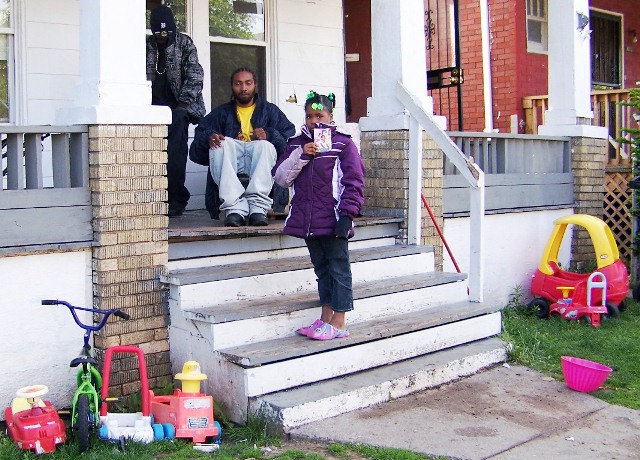
- These same toys were in front yard of Jones home when police surveilled the place the day of May 15, 2014, according to testimony in Weekley’s first trial. Aiyana’s cousin Mark Robinson, who was restrained by Sgt. LaTanya Brooks, told her there were children in the house.
LaTanya Brooks, a retired Detroit police sergeant from the Homicide squad, testified after Stanley regarding the homicide unit’s investigation into the Blake killing and anonymous calls they had received identifying Chauncey Owens as the killer. She said one caller, identifying herself as an “aunt” in the Jones family, gave his address at 4056 Lillibridge, and others claimed he had an AK 47 and a 45 caliber pistol.
Brooks said no AK47 was found in either flat after the raid, which she helped coordinate. Police during Weekley’s earlier trial all testified that they found no weapons at either address.
In “The First 48” video of Brooks’ preparation for the raid, she repeatedly refers to the 4056 address, not to 4054 Lillibridge, where Mertilla Jones lived. Jones family members have said they never saw a search warrant for their own home.
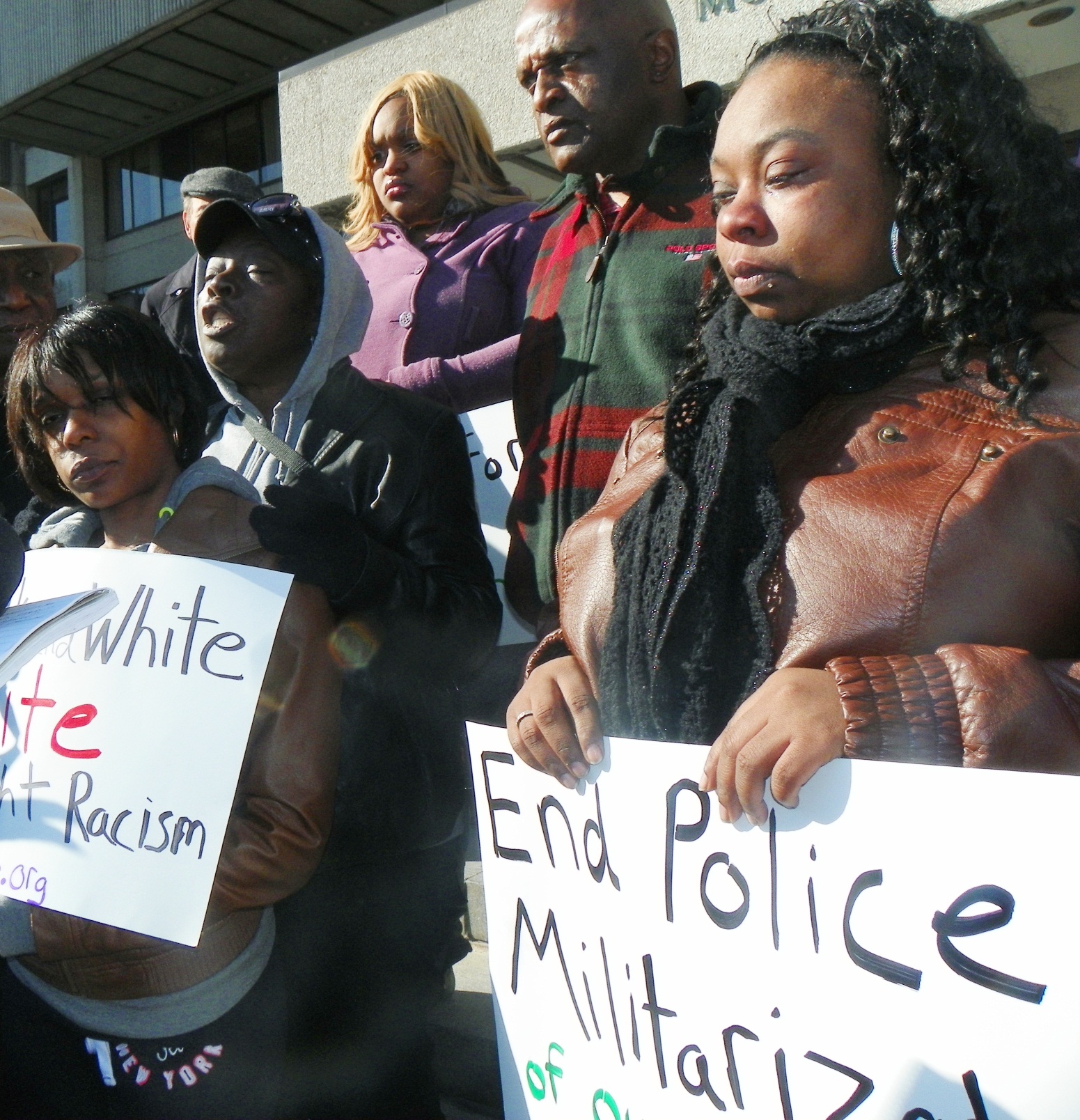
- Aiyana Jones’ family at rally on courthouse steps March 8, 2013. (L to r) – mother Dominika Stanley, grandmother Mertilla Jones, aunt, maternal grandfather Jimmie Stanley, aunt LaKrystal Sanders.
There is also police conversation on the videotapes, which were shown to the jury by the prosecution, that the Jones home was likely a drug house. However, testimony at Owens’ trial indicated that Owens’ half-brother Sh’rrod Hurt lived across the street, and was likely running drugs out of that house. Defense attorney David Cripps’ alternate theory of the Blake killing was that Sh’rrod Hurt, who admitted to being at the scene, confronted and killed Blake.
The trial will resume Monday, Sept. 22, at 9 a.m. in Judge Cynthia Gray Hathaway’s courtroom, #801.
On Friday, Sept. 19, a post-conviction hearing regarding Charles Jones is to be held in the courtroom of Wayne County Circuit Judge Richard Skutt. Jones’ appeals attorney contends that there is no cause to have convicted Jones of second-degree murder, since the jury in his trial found him “not guilty” of all gun charges. Prosecutor Moran alleged that Jones gave Owens the gun to kill Blake. Jones’ attorney has also filed for a writ of habeas corpus.
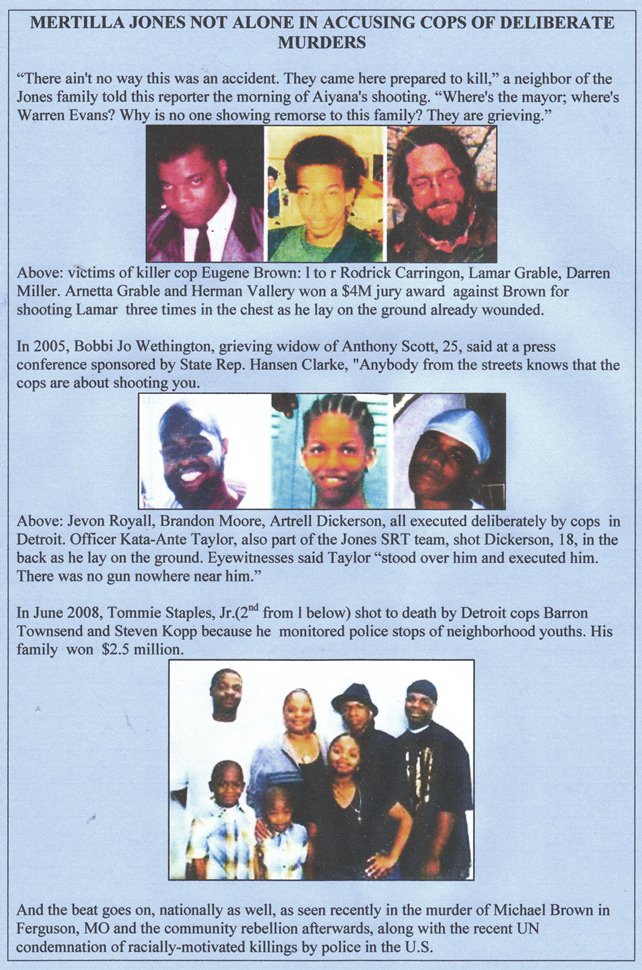
RELATED STORIES:
http://voiceofdetroit.net/2014/08/16/police-and-protesters-clash-again-in-ferguson-east-side-detroit-rebellion-aug-13/
http://voiceofdetroit.net/2013/10/22/families-demand-no-police-state-under-detroit-chief-craig-top-cops/
http://voiceofdetroit.net/2012/11/09/every-36-hrs-police-in-u-s-kill-a-black-person-demand-pres-obama-take-action/ Continue reading →
